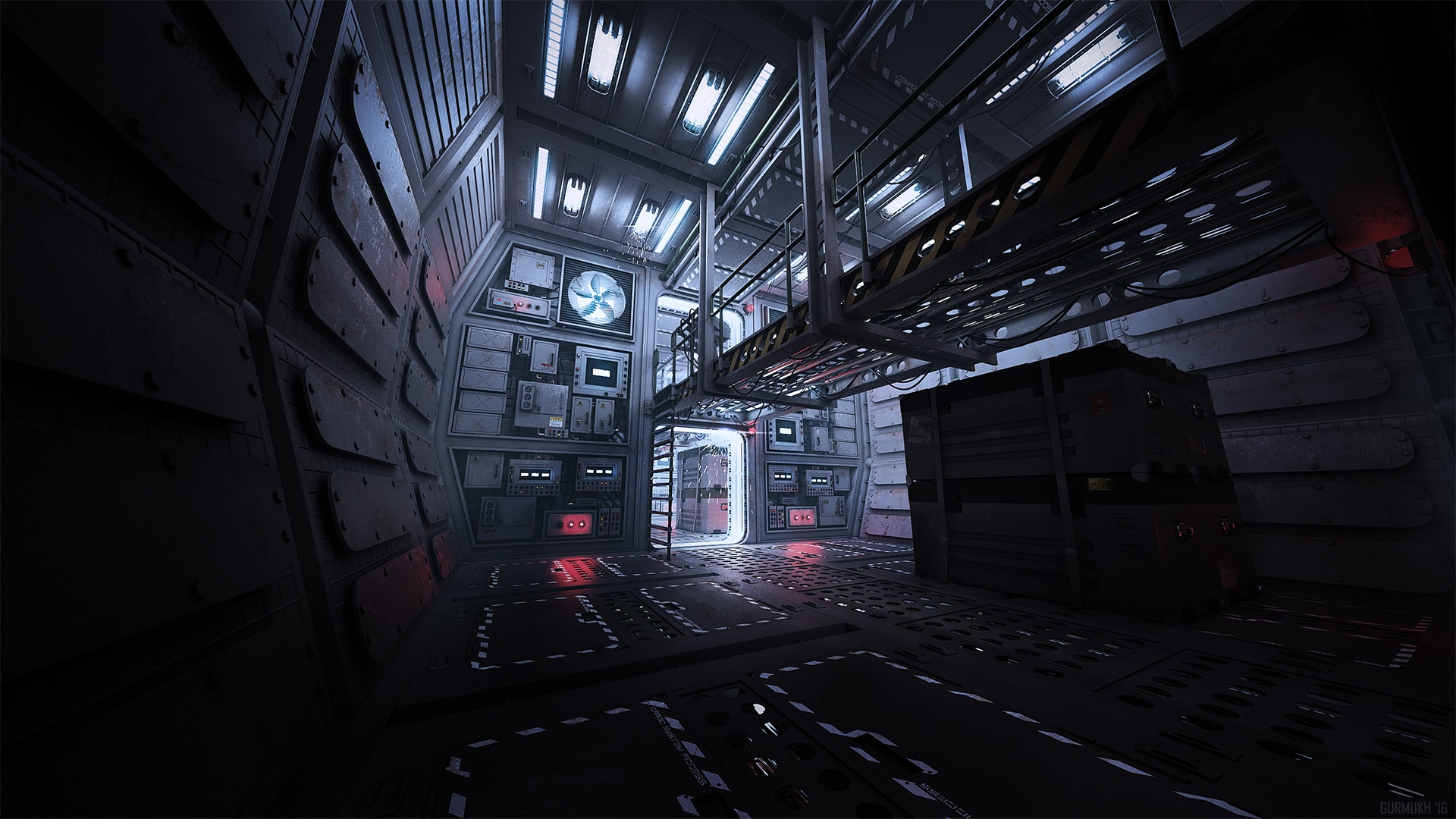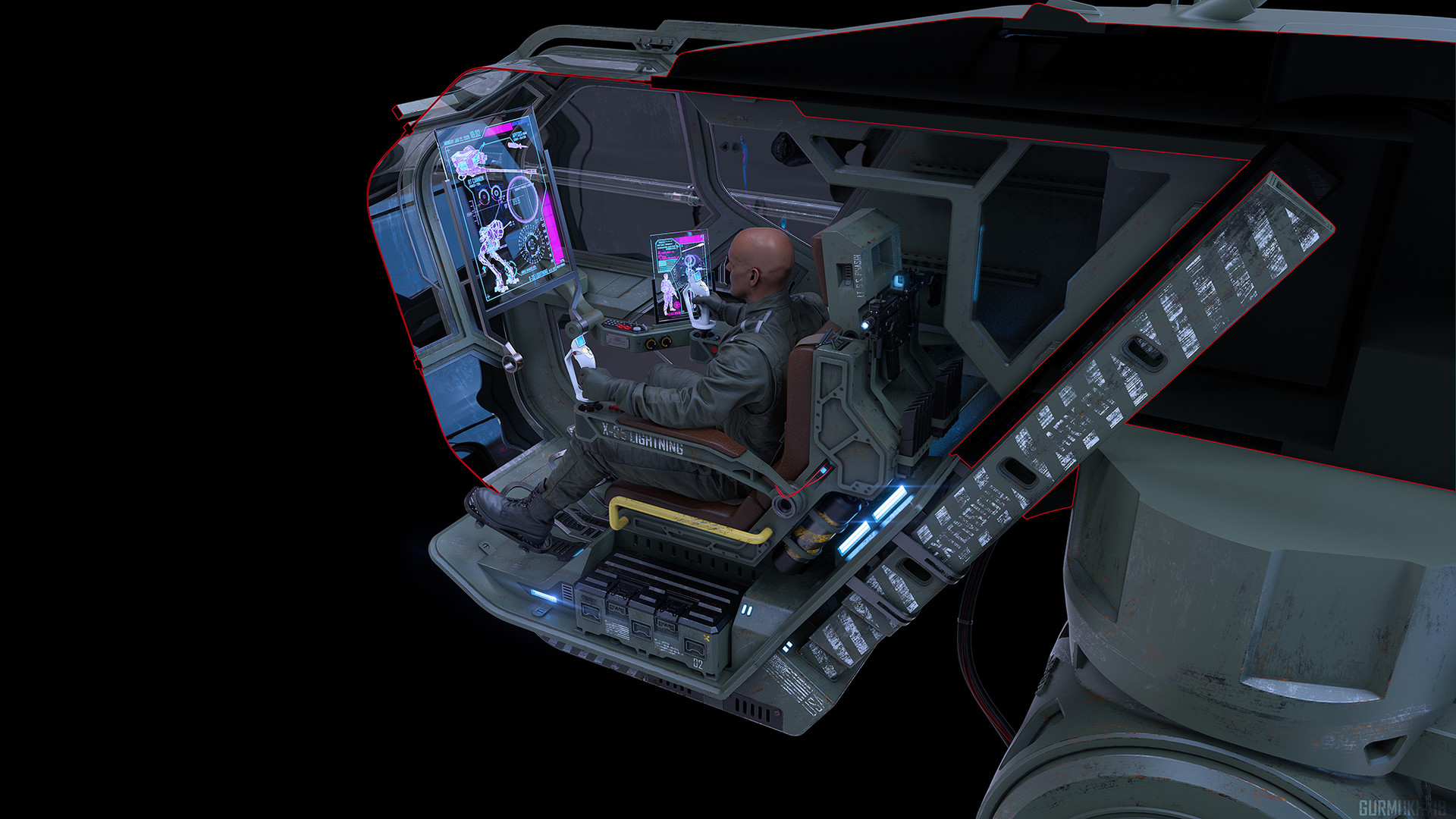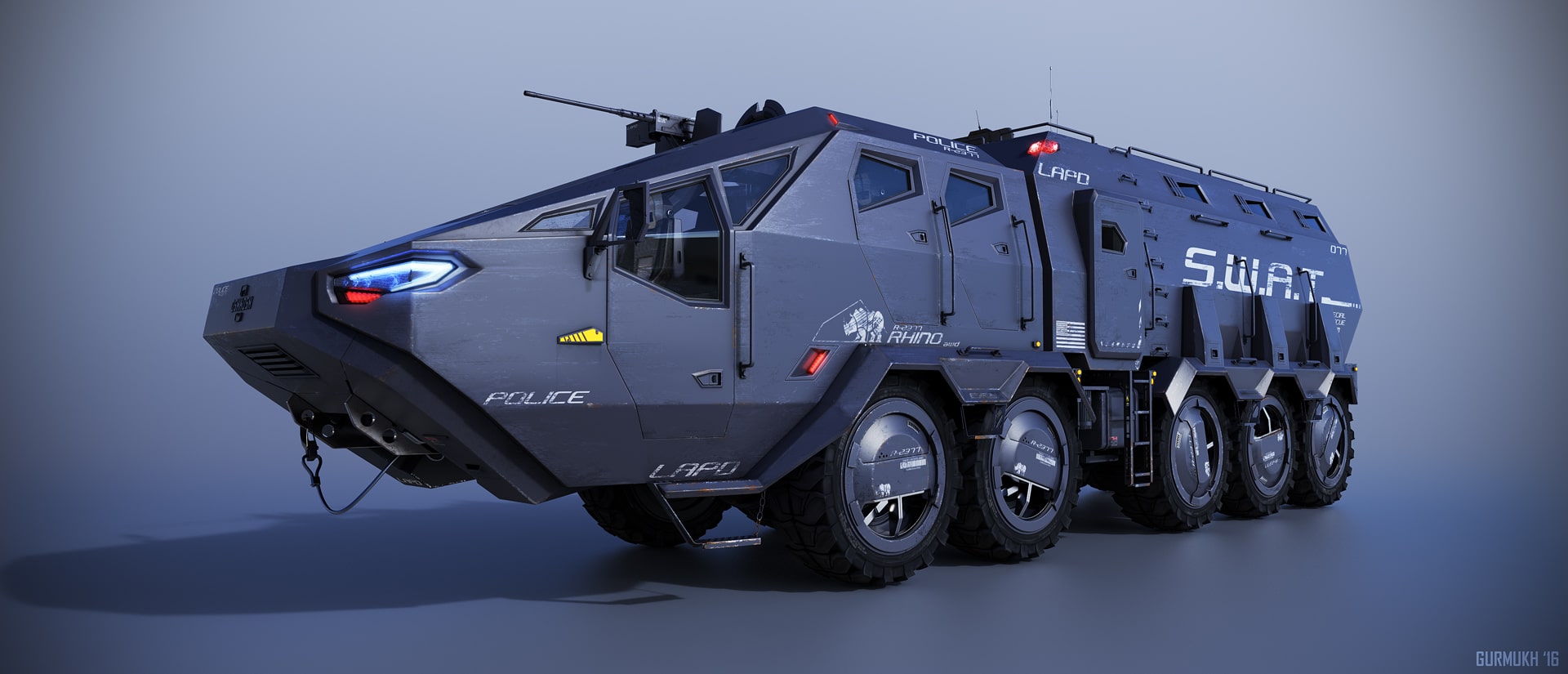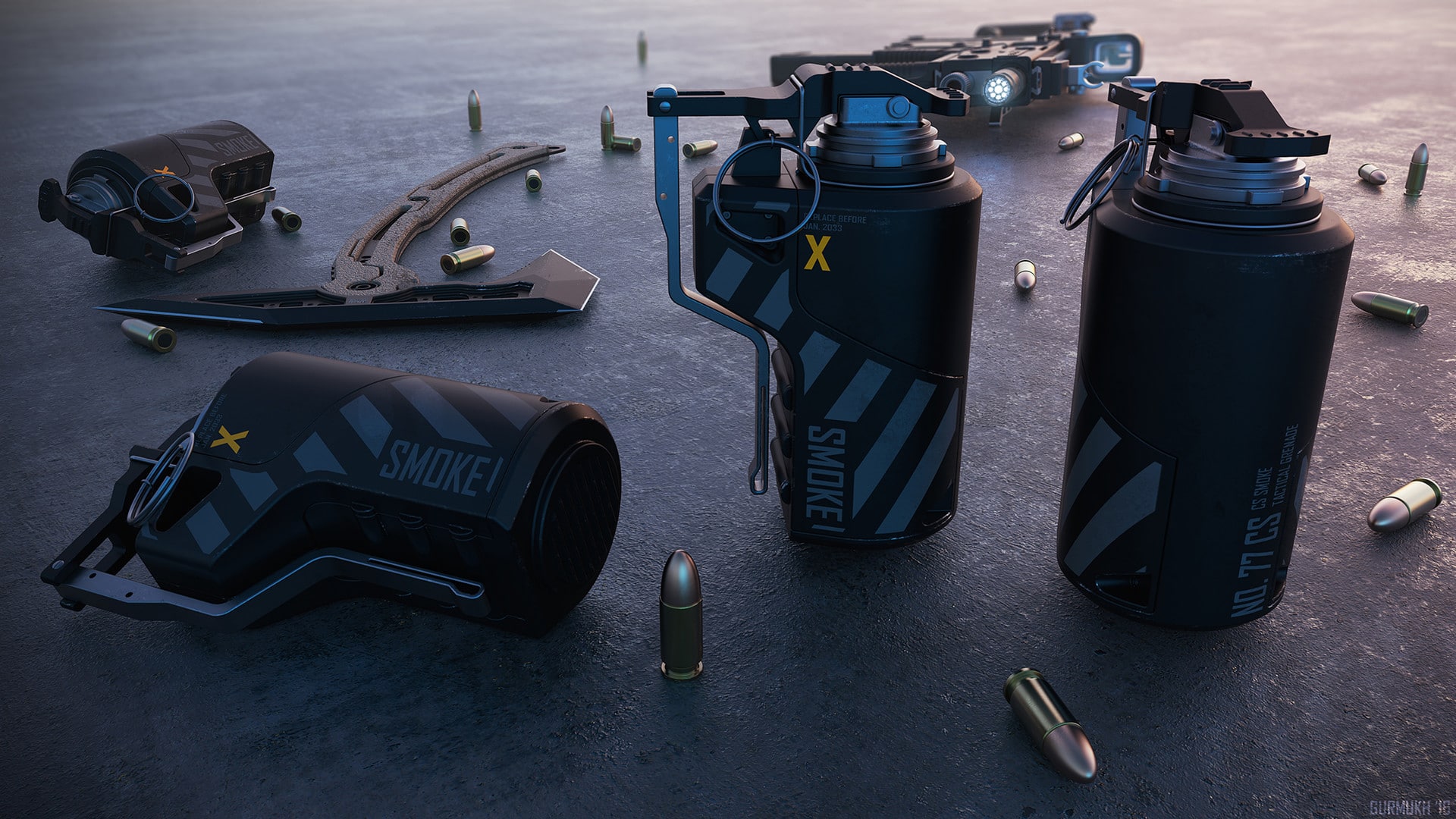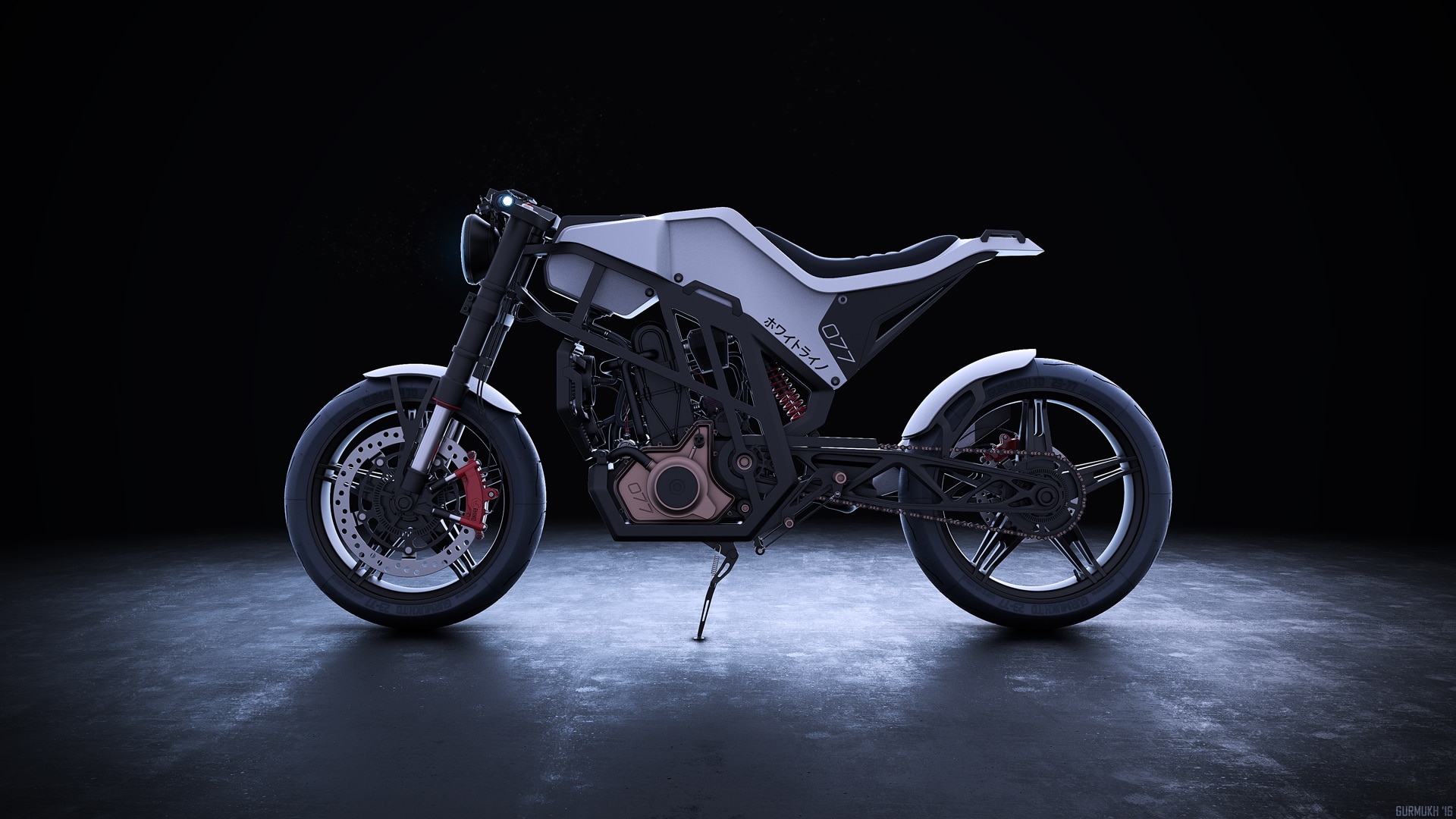Gurmukh Bhasin is a multi-talented, LA-based Concept Artist with a foundation that spans the disciplines of architectural design and concept design. His ability to capture the ideas and interests of people has put him at leading companies and agencies around the world delivering original ideas and stunning visuals. He makes it happen using KeyShot and tells us why it has been such an instrumental tool in his career.
Gurmukh Bhasin
Website / Altered Mechanics / Behance / Artstation
How has your role as a Concept Designer/Art Director changed over the years?
My career began in Architecture with a Bachelor’s, a Master’s and eight years of professional experience. Even in my architecture days, I was more attracted to the early phase of design and mostly worked on the concept phase of the large architectural projects. That part of the project was all about starting with a blank page and creating a visually stunning presentation that would get the client excited about creating their building and dreaming about what it would become. It is the more open idea and exploratory part of the architectural design process where, in my opinion, most of the fun is had as a designer.
Around 2010, I felt I wasn’t satisfied creatively in Architecture and decided to make a career switch to concept design in the entertainment industry. I began to work on my concept portfolio while teaching myself as much as I could through online resources. It took me about four years of nights and weekends (while working a full-time architecture job) to finally get my foot in the door as a 3D Concept Designer at Cloud Imperium Games designing spaceships for Star Citizen. I went from designing buildings in the real world to designing fictional spaceships — I couldn’t have been happier. My two and a half years working on Star Citizen were very tough but also very rewarding. I was able to contribute to a handful of designs and really grew as a Concept Designer in the entertainment industry.
Eventually, I decided to move on to something different. In 2016, I went freelance, creating my own concept design business. With freelance, I wasn’t sure where my design career would go, but I knew I wanted to leave my doors wide open for any type of client who needs conceptual design and illustrative services. Since then, I have worked on all types of projects across multiple industries. I have done a lot of industrial design work on products like tires for large tire companies, drones, weapons and self-driving trucks for the military. I have done work with multiple creative agencies creating concept pitches for Hyundai, Toyota, Genesis, Miller and more. I have done work on multiple virtual reality experiences and games. I have helped create designs and illustrations for TV and commercials. I teach at Gnomon and have taught at other schools in the past. And, I am a Co-founder and Art Director of Altered Mechanics, a hardware and software VR tech company.
Needless to say, my role as a Concept Designer/Art Director has changed drastically over the years. Looking back on it all, the road was winding, but always focused on the conceptual phase of design and visually creating original ideas that wouldn’t even exist without my creative mind expressing itself.
Does your approach to a project change depending on if the subject is for Game Design or Product Design?
My approach stays mostly the same for both entertainment design and product design. The only thing that is really different is when creating real-world product design concepts I usually have more guidelines and restrictions that influence what I can create. I am still only creating the concept of that product and an engineer has to then take my concept and make it actually work. Therefore, I am mostly designing the aesthetics of the product and creating stunning visuals to help sell the product before lots of time is put into turning it into a fully functional physical thing.
 The companies I work for can get deposits, orders placed or letters of intent for orders based on the conceptual renders I create. It helps them realize the product will sell well before they invest lots of time and money into its physical creation. An image that looks photo real is going to sell the future product way more than just a verbal description, and I have helped my clients make millions of dollars off of simple renders of what they intend to make.
The companies I work for can get deposits, orders placed or letters of intent for orders based on the conceptual renders I create. It helps them realize the product will sell well before they invest lots of time and money into its physical creation. An image that looks photo real is going to sell the future product way more than just a verbal description, and I have helped my clients make millions of dollars off of simple renders of what they intend to make.
My conceptual style as you can see in my work is very functional, realistic, and believable. I do all my conceptual work in 3D and like to think all the way down to the nuts and bolts, how it all functions, for both real and fictional designs. For real-world designs, I use function to help drive the aesthetics and make the designs evoke a certain emotional feeling for its user within the geometrical decisions I create in 3D space. For the fictional designs, I imagine stories about the function of the prop, environment, or vehicle and use those stories to help guide the function of my design so it evokes a certain emotional reaction when the audience sees my creation. In the end, both approaches have a similar thought process and workflow.
How has your use of KeyShot changed/evolved over the years?
I started using KeyShot in 2014 when I was working on Star Citizen — it was basically love at first sight! Before that, I was using other more complicated rendering engines and it always felt like the rendering process was a guessing game, not enjoyable at all. I was attracted to KeyShot by how easy it was to use and how friendly and artistic it was to create gorgeous results. It drastically cut the time it took to create the renders I wanted and eliminated settling for something I was just kind-of looking for.
Because KeyShot is real-time, I can use it to play around with my design and figure out what I want the final version to look like before really knowing what I want. It is a very fun discovery process.
Over the years, one of the biggest things that have evolved in my KeyShot workflow is me trying to break the program and shove as much geometry as possible into my scenes. So far KeyShot hasn’t failed me once and this has actually allowed me to dive deeper into the details in my 3D designs knowing that I can export super large scenes and KeyShot will render it without a problem. It is pretty interesting to think that because KeyShot will allow me to render very high poly scenes, I can then be freer to make more complicated design moves when working in 3D which allows me to come up with more complex ideas.
The tools you choose to create with will always influence what you are able to create so it is always important to try and find tools that restrict you in the smallest way possible. Even drawing with a pencil on paper will influence what you are designing in a certain way. For me, KeyShot is the render engine that allows me to be the freest to play and create what I want, with the least amount of influence and restriction. I built my PC in 2011 and have only swapped out a couple of parts. I am always amazed when KeyShot is rendering my 300 million polygon scenes without any problems on my aging machine.
Gurmukh Bhasin on KeyShot 9:
“KeyShot just keeps getting more and more fun and friendly to use. Testing different materials, finishes, environments and lighting is just a drag and drop. With Keyshot 9, render speeds are faster and, with the new GPU rendering, using KeyShot to discover your final result is even more powerful. For me, KeyShot is the only rendering software I can use more like an actual design tool rather than simply an image creating tool. With just a few materials, quick and easy environment settings, and a couple clicks here and there, you quickly have stunning renders of your beautiful 3D designs to share with the world!”
Can you describe your workflow?
I do all my concept designs in 3D and don’t really sketch or draw. I don’t find the sketching phase to be useful to my workflow and I always feel like it gets in the way and is a waste of time for me to create what I ultimately end up with. I know it is pretty strange for a designer to say that he doesn’t sketch, but it’s what works for me and how my brain likes to work. I love designing in 3D because it allows me to think about my designs as if I am creating them in the real world. I can really investigate and create each part of a project as it relates to the project as a whole. I can test functionality, make sure parts don’t get in the way of each other, and truly problem solve.
 I like to call them ‘mini design projects’ inside the ‘large design project’. My workflow usually starts off in Maya with a simple block-in of what I’m about to create. If I’m creating a mech or a spaceship, for example, I’ll use simple geometry to lay out the shapes, move scale figures around to make sure everything works to the human scale, test out different animations, movement or parts, and stances to get an overall feel and outline of my project.
I like to call them ‘mini design projects’ inside the ‘large design project’. My workflow usually starts off in Maya with a simple block-in of what I’m about to create. If I’m creating a mech or a spaceship, for example, I’ll use simple geometry to lay out the shapes, move scale figures around to make sure everything works to the human scale, test out different animations, movement or parts, and stances to get an overall feel and outline of my project.
Next, I break down the project into ‘mini design projects’ to knock out one at a time. For example, on a mech, I’ll make the legs a mini design project, the feet a mini design project, the cockpit a mini design project, and so on. I’ll take the simple geometry block-in from Maya and bring it into Moment of Inspiration (MoI3D) to focus on creating the entire design for that part of the project. I’ll then export that design from MoI3D back into Maya where I assemble my scene back together as a complete design.
Next, I’ll set up my temporary materials in Maya, pose my scene, and get everything ready to send to KeyShot. I’ll use the Maya to KeyShot plugin to send everything over. Once I’m in KeyShot, I can drag and drop different materials onto my model and play around with how I want the visuals of my 3D concept to look. I can decide on colors, finishes, and material types or play around with lighting and how different colors of light to accentuate the curvature of my 3D design to show off how sexy it is.
I will then render out a bunch of passes from KeyShot to composite in Photoshop and bring those renders to life. I like to call this part adding a soul to your images. In Photoshop, I will add scratches, dirt, wear and tear to make the renders moodier. After all that, I call a project complete. It’s pretty much the same process for both personal and professional work, but if the project is a small prop or product, I may skip the initial block-in phase in Maya and just start directly in MoI3D. Maya is always my home base for bringing everything together and setting up my scene to send to KeyShot for rendering.
What projects have you used KeyShot on over the past year?
I use KeyShot in all of the work I do. KeyShot helps me bring all my designs to life and allows my client to see the designs I’ve created for them in a realistic way so they get a full picture of what the product will look like once it is built in the real world. In the past year or so, I’ve done work for:
Falken tires: Designed around 10 tires for Falken with more in the works.
Dunlop tires: Designed an adventure 50/50 motorcycle tire and a GT sport tire.
Burgeon Digital: Designed a spaceship, bridge and a moon rover for a VR experience.
First Contact Entertainment: Designed a science lab type environment for a VR game.
Jackson Dawson: Created illustrations for Hyundai and Genesis events.
Brainstorm School: Taught KeyShot as a part of my Hard Surface 3D Concept Design class.
Gnomon School of Visual Effects: Taught KeyShot as a part of my Advanced Hard Surface Modeling class.
Altered Mechanics: Designed a mech, gunner turret, weapons, truck, kiosk, chair, marketing materials, and more.
Reality Smash/Swift Engineering: Designed/created illustrations of drones, weapons, trucks for the military.
Any new advice for those interested in freelance or starting up a concept design business?
It is much easier to go freelance or start up your own concept design business if you have already established your name and reputation by working on large projects. I suggest working at well-known companies on well-known projects for a couple of years before going at it on your own. That way you are easier to find by potential clients and your online resume speaks for itself.
Once you are ready to go freelance, I suggest always finding time to do your own personal projects and create your own Intellectual Property. By working on your own projects and releasing them online, you will be hired to do more of the work you want to do because future clients will want to hire you to create projects like those you have shared but do it for them. By having your own projects you’ll have complete control over what you design and won’t have to sacrifice your creativity to your client’s desire. It’s a great balance between doing what others want to pay you for and doing what you want to do for yourself. And ultimately, it helps you feel satisfied while constantly growing as a designer. This will only lead to more of the type of work you want to do and less of the work you don’t want to do.
Don’t waste your time applying for jobs as a freelancer and don’t be desperate for money when going freelance. That will only lead to taking projects you won’t want for a price that is lower than you want to work for. It is a slippery slope to a stressful and unfulfilling freelance career. Put time into developing your personal portfolio, making your skills stronger and faster and having your own aesthetic in your work that is unique to you. Share your work online once it is ready, share the process along the way and share it all over the internet on different portfolio sites and social media. Then sit back as your work travels digitally all over the world and opens doors for projects that you never even imagined you would be a part of. My personal favorite portfolio site to post on is Behance, but there are so many out there people look at, so put your stuff anywhere you can.







